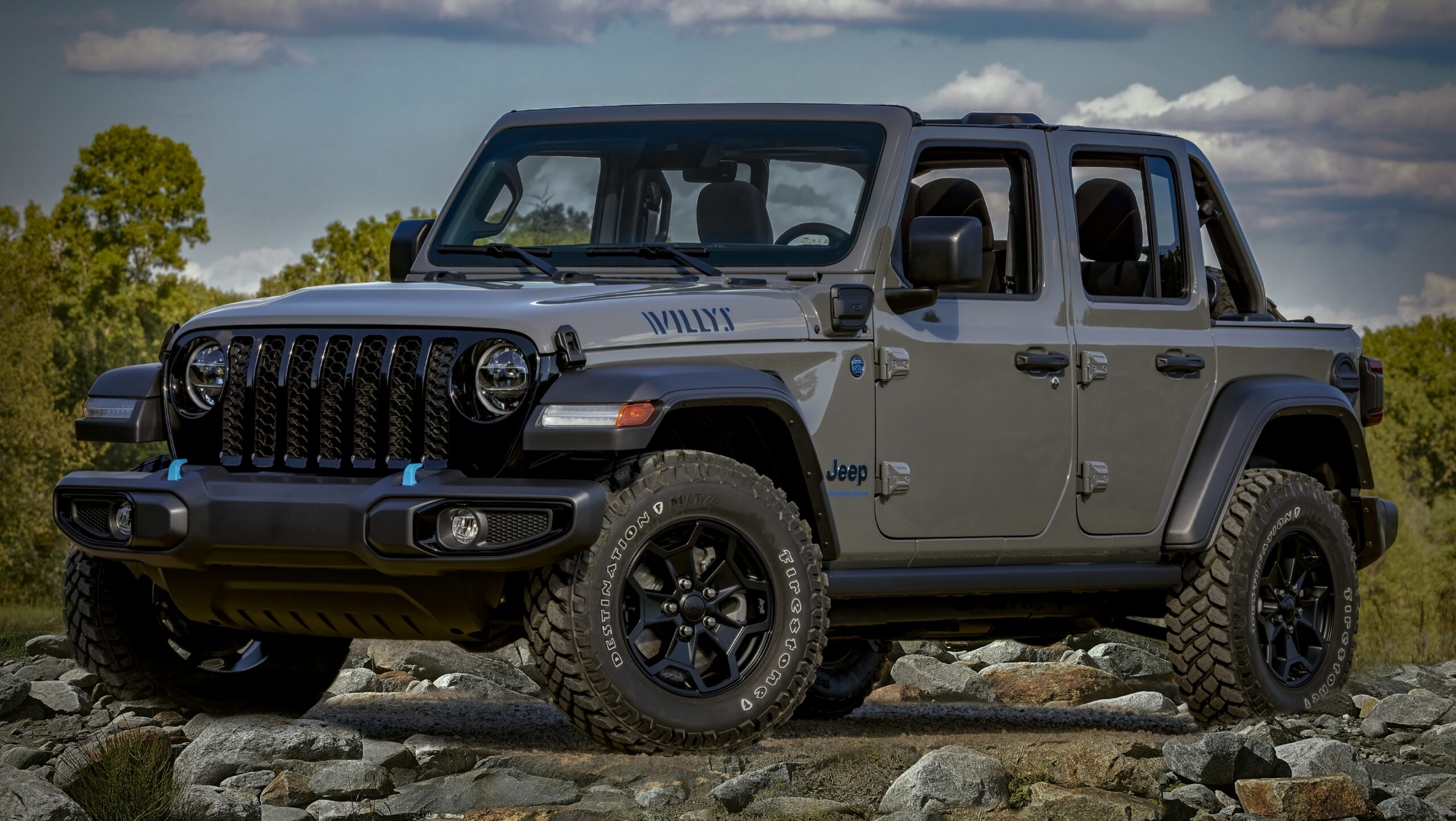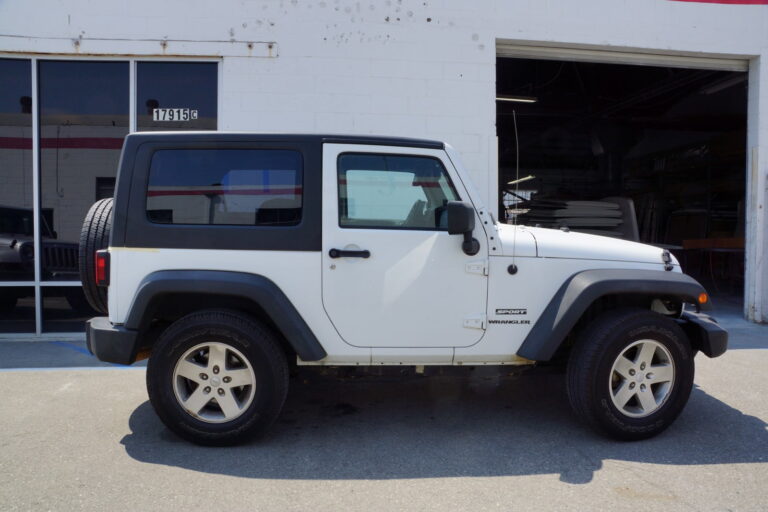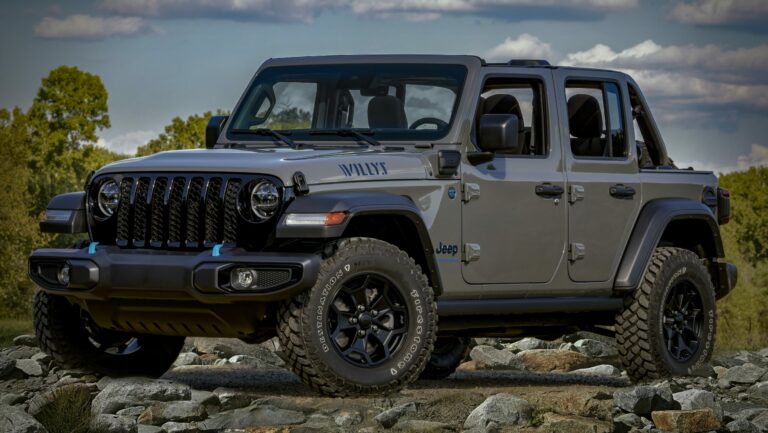Jeep AW4 Transmission For Sale: Your Ultimate Guide to Finding and Replacing This Legendary Workhorse
Jeep AW4 Transmission For Sale: Your Ultimate Guide to Finding and Replacing This Legendary Workhorse /jeeps.truckstrend.com
For many Jeep enthusiasts, particularly those who swear by the venerable XJ Cherokee, the AW4 automatic transmission isn’t just a component; it’s the heart of their vehicle’s legendary reliability. Known for its robust design, smooth shifting, and incredible durability, the Aisin-Warner AW4 has powered countless 4.0L inline-six Jeeps through millions of miles of trails, commutes, and adventures.
However, even the toughest components eventually reach the end of their service life. Whether you’re experiencing slipping gears, harsh shifts, a complete loss of drive, or you’re simply planning a rebuild or upgrade for a project vehicle, the quest for a "Jeep AW4 Transmission For Sale" is a common one. This comprehensive guide will walk you through everything you need to know about finding, evaluating, and ultimately acquiring the right AW4 transmission to keep your beloved Jeep roaring.
Jeep AW4 Transmission For Sale: Your Ultimate Guide to Finding and Replacing This Legendary Workhorse
Understanding the AW4: A Legacy of Reliability
Before diving into the market, it’s crucial to understand what makes the AW4 so special. Developed by Aisin-Warner (a Toyota group company), this 4-speed electronically controlled automatic transmission was primarily paired with the bulletproof 4.0-liter inline-six engine in Jeep Cherokee (XJ) models from 1987 to 2001, as well as the Comanche (MJ) and early Grand Cherokee (ZJ) models.
Its reputation for longevity stems from several key design aspects:
- Simplicity and Strength: While electronically controlled, its internal mechanicals are straightforward and built to withstand significant abuse.
- Durability: The AW4 is known to outlast many other automatic transmissions of its era, often reaching 200,000 to 300,000 miles (or more!) with proper maintenance.
- Efficiency: Its 4-speed design provides a good balance of acceleration and highway cruising efficiency for its time.
- Adaptability: Its commonality makes parts, knowledge, and replacement units relatively easy to find.

This robust legacy is precisely why, even decades later, many Jeep owners prefer to replace a failing AW4 with another AW4 rather than attempting a conversion or opting for a different transmission. The demand for a "Jeep AW4 Transmission For Sale" remains consistently high.
When to Consider a Replacement AW4 Transmission

Identifying the right time to seek a replacement AW4 can save you from bigger headaches down the road. While the AW4 is tough, it’s not invincible. Here are common signs that your transmission might be failing and a replacement or major rebuild is imminent:
- Slipping Gears: The engine revs but the vehicle doesn’t accelerate proportionally, especially under load. This indicates worn clutch packs.
- Harsh or Delayed Shifts: The transmission shifts with a jolt, or there’s a noticeable delay before it engages a gear.
- No Reverse or Forward Gears: A complete loss of drive in one or more gears is a clear sign of major internal failure.
- Strange Noises: Whining, clunking, or grinding sounds coming from the transmission area.
- Fluid Leaks: While minor leaks can sometimes be sealed, significant, persistent leaks can indicate a deeper issue or lead to low fluid levels and damage.
- Burnt Fluid Smell: Transmission fluid that smells burnt or looks dark and sludgy is a strong indicator of overheating and internal wear.
- Check Engine Light/Transmission Codes: Modern OBD-II systems (1996 and newer) can throw specific codes related to transmission solenoids, sensors, or internal issues.

While some issues (like a faulty solenoid or sensor) can be repaired individually, extensive internal wear or damage often makes a full replacement or professional rebuild a more cost-effective and reliable long-term solution.
Types of AW4 Transmissions For Sale: New, Rebuilt, Used
When you begin your search for a "Jeep AW4 Transmission For Sale," you’ll encounter a few main categories, each with its own pros and cons regarding cost, reliability, and warranty.
1. Remanufactured/New AW4 Transmissions
- Description: These transmissions have been completely disassembled, cleaned, inspected, and rebuilt with new or remanufactured components to meet or exceed OEM specifications. In some rare cases, "new" might refer to a unit that was never installed, but remanufactured is far more common.
- Pros: Highest reliability, comes with a substantial warranty (often 1-3 years or more), essentially a "new" transmission in terms of performance and lifespan.
- Cons: Highest cost.
- Ideal For: Those seeking maximum peace of mind, long-term reliability, or professional shops needing a guaranteed solution.
2. Rebuilt/Refurbished AW4 Transmissions
- Description: These are units that have been repaired and reassembled by a transmission shop or specialist. The extent of the rebuild can vary greatly, from replacing only failed components to a more comprehensive overhaul.
- Pros: Generally more affordable than remanufactured, often come with a decent warranty (e.g., 6 months to 1 year).
- Cons: Quality can vary significantly depending on the rebuilder’s expertise, parts used, and attention to detail. Thorough vetting of the seller is crucial.
- Ideal For: Budget-conscious buyers who still want a reliable unit with some form of guarantee.
3. Used/Salvage AW4 Transmissions
- Description: These are transmissions pulled from donor vehicles, typically from junkyards, salvage yards, or private sellers.
- Pros: Lowest cost by far.
- Cons: Unknown history, no warranty (or very limited), potential for hidden issues, "as-is" condition. You’re buying a gamble.
- Ideal For: Very tight budgets, experienced DIY mechanics comfortable with potential risks, or those looking for core units for personal rebuild projects.
Where to Find a Jeep AW4 Transmission For Sale
The market for AW4 transmissions is robust, with several avenues to explore:
- Specialized Jeep Parts Retailers: Many online and brick-and-mortar stores specialize in Jeep parts, including remanufactured and rebuilt transmissions. Examples include companies like Quadratec, Morris 4×4 Center, and dedicated transmission shops that rebuild for the Jeep community.
- Local Transmission Shops: Many reputable local transmission repair shops offer rebuild services or may have rebuilt units for sale. They often provide installation services as well.
- Salvage Yards/Junkyards: A popular source for used AW4s. You can physically inspect units (if allowed) or inquire about donor vehicle mileage. Websites like Car-Part.com can help locate specific parts at yards near you.
- Online Marketplaces:
- eBay: A vast selection of used, rebuilt, and remanufactured AW4s from various sellers. Pay close attention to seller ratings, descriptions, and return policies.
- Craigslist/Facebook Marketplace: Good for finding local private sellers or smaller shops. Allows for direct communication and inspection before purchase. Be wary of scams.
- Jeep Forums & Enthusiast Groups: Dedicated Jeep Cherokee forums (e.g., NAXJA, Cherokee Forum) often have "for sale" sections where members sell parts. This can be a good source for well-maintained used units from fellow enthusiasts.
Key Considerations Before You Buy
Acquiring a "Jeep AW4 Transmission For Sale" isn’t just about finding the cheapest option. Careful consideration of these factors will prevent costly mistakes:
-
Compatibility (Crucial!):
- Year: While the AW4 was used from ’87-’01, there are minor differences. Ensure the donor year is compatible with your Jeep’s year, especially regarding sensor locations and wiring harness connectors. Generally, ’87-’90 are considered "early" and ’91-’01 "late" with subtle variations.
- Engine: The AW4 is designed for the 4.0L inline-six. Do not try to adapt it to other engines unless you’re undertaking a highly specialized custom build.
- Transfer Case Spline Count: This is the most critical compatibility factor.
- 21-spline output shaft: Found on early (typically 1987-1990) AW4s, paired with NP231/NP242 transfer cases.
- 23-spline output shaft: Found on later (typically 1991-2001) AW4s, paired with NP231/NP242 transfer cases.
- You MUST match the spline count of your existing transfer case or acquire a compatible transfer case. Swapping splines requires a complete teardown of the transfer case or a new one.
-
Condition (Especially for Used Units):
- Fluid Check: If possible, inspect the fluid in the pan (if still attached). It should be reddish and clear, not dark, burnt-smelling, or metallic.
- Pan Inspection: Look for excessive debris or metal shavings in the pan.
- Visual Damage: Check for cracks in the casing, damaged sensor ports, or broken mounts.
- Mileage: For used units, try to get the mileage of the donor vehicle. Lower mileage is generally better.
-
Warranty/Guarantee:
- For remanufactured or rebuilt units, get the warranty in writing. Understand what it covers (parts, labor, shipping), for how long, and the return/exchange process.
- For used units, assume no warranty unless explicitly stated by a reputable seller.
-
Shipping Costs: Transmissions are heavy. Factor in freight shipping costs, which can be significant, especially for cross-country purchases. Ask if the shipping includes liftgate service if you don’t have a forklift or loading dock.
-
Associated Parts:
- Torque Converter: It’s highly recommended to replace the torque converter when installing a new or rebuilt transmission. For used units, consider replacing it as well to avoid contamination from the old transmission.
- Flex Plate: Inspect your current flex plate for cracks or damage.
- Transmission Cooler: Consider flushing or replacing your transmission cooler and lines to prevent contamination of the new unit.
- Sensors: Check if the transmission comes with essential sensors (input/output speed sensors, neutral safety switch).
- Fluid: You’ll need several quarts of appropriate transmission fluid (Dexron III/Mercon or equivalent).
Installation Tips and Post-Installation Care
Whether you’re a seasoned DIY mechanic or planning to have a professional handle the installation, here are some points to keep in mind:
- Safety First: Always use proper jack stands and lifting equipment. Secure the vehicle thoroughly.
- Drain Fluids: Drain both transmission and transfer case fluids before removal.
- Inspect Before Install: Before bolting up the new transmission, double-check all mating surfaces, and ensure the torque converter is fully seated into the pump.
- New Components: Replace the transmission filter and pan gasket. Consider new transmission mounts.
- Fluid Fill: Fill the transmission with the correct type and amount of fluid (typically Dexron III/Mercon compatible fluid). Follow the specific fill procedure for the AW4 (check fluid level in Neutral, after the engine has run and warmed up).
- Break-in (for rebuilt/remanufactured): Follow the rebuilder’s specific break-in recommendations, if any. This often involves gentle driving for the first few hundred miles.
- Regular Maintenance: Once installed, adhere to a regular transmission fluid and filter change schedule (e.g., every 30,000-50,000 miles, more often for heavy use or towing) to ensure the longevity of your "new" AW4.
Practical Advice and Actionable Insights
- Do Your Homework: Research sellers thoroughly. Read reviews, check their return policies, and don’t hesitate to ask detailed questions about the transmission’s history, testing, and warranty.
- Verify Compatibility: Always double-check your Jeep’s exact year, engine, and especially the transfer case spline count before ordering. A mis-match can turn a simple swap into a costly nightmare.
- Factor in All Costs: Beyond the purchase price, consider shipping, torque converter, fluid, filters, gaskets, and potential professional installation fees.
- Consider Your Skill Level: Replacing a transmission is a significant undertaking. If you’re not comfortable with heavy lifting, complex unbolting, and precise reassembly, budget for professional installation.
- Prioritize Warranty: For peace of mind, a remanufactured or reputable rebuilt unit with a solid warranty is almost always a better investment than a cheap, used "as-is" unit.
Jeep AW4 Transmission For Sale: Estimated Price Guide
Please note that these are estimated price ranges in USD as of early 2024. Actual prices will vary significantly based on seller, location, specific condition, warranty, and market demand. Always get a specific quote.
| Type of AW4 Transmission | Condition/Description | Estimated Price Range (USD) | Typical Warranty |
|---|---|---|---|
| Used/Salvage | Pulled from donor vehicle, "as-is" | $300 – $800 | None to 30-90 days (parts only, very limited) |
| Rebuilt/Refurbished | Professionally rebuilt, varying scope | $900 – $1,800 | 6 months to 1 year (parts and sometimes labor) |
| Remanufactured | Factory-level rebuild, new components | $1,800 – $2,800+ | 1 year to 3 years (parts and labor) |
| Torque Converter | New or Remanufactured (recommended) | $150 – $350 | Often separate from transmission warranty |
| Installation Labor | Professional Shop (not included in unit price) | $600 – $1,200+ | Depends on shop rates and complexity |
Frequently Asked Questions (FAQ)
Q1: What vehicles use the AW4 transmission?
A1: Primarily the Jeep Cherokee (XJ) from 1987-2001 with the 4.0L inline-six engine, the Jeep Comanche (MJ) pickup, and some early Jeep Grand Cherokee (ZJ) models.
Q2: How long does an AW4 typically last?
A2: With proper maintenance (regular fluid and filter changes), an AW4 can easily last 200,000 to 300,000 miles, and many owners report even higher mileage. They are known for their exceptional durability.
Q3: Is it hard to replace an AW4 myself?
A3: Replacing an AW4 is a significant mechanical task. It requires proper tools (transmission jack, jack stands, various wrenches), mechanical aptitude, and the ability to handle heavy components. It’s challenging but certainly doable for an experienced DIY mechanic. If unsure, professional installation is recommended.
Q4: Do I need a new torque converter with a new/rebuilt AW4?
A4: Yes, it is highly recommended to replace the torque converter. An old torque converter can harbor contaminants or internal wear that could quickly damage your new or rebuilt transmission.
Q5: What’s the difference between 21-spline and 23-spline AW4s?
A5: This refers to the number of splines on the transmission’s output shaft, which connects to the transfer case. Early AW4s (typically 1987-1990) have 21 splines, while later ones (typically 1991-2001) have 23 splines. You must match the spline count to your existing transfer case, or replace the transfer case as well.
Q6: What kind of fluid does an AW4 take?
A6: The AW4 uses Dexron III/Mercon compatible automatic transmission fluid. Always check your owner’s manual or a reliable service guide for the most accurate recommendation for your specific year.
Concluding Summary
The quest for a "Jeep AW4 Transmission For Sale" is a testament to the enduring popularity and reliability of these classic Jeeps. The AW4’s legendary status as a robust and dependable automatic transmission makes it a highly sought-after component for replacement or project builds. By understanding the different types available, knowing where to look, and carefully considering crucial factors like compatibility, condition, and warranty, you can make an informed decision.
Whether you opt for a budget-friendly used unit, a warrantied rebuilt option, or a top-tier remanufactured transmission, choosing the right AW4 is an investment in the continued life and adventures of your beloved Jeep. With proper installation and ongoing maintenance, your "new" AW4 will ensure many more miles of reliable performance, keeping your Jeep rolling strong for years to come.
![]()




